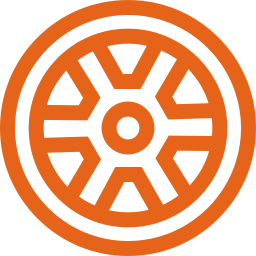It is never pleasant to discover new noises on your vehicle. We constantly tend to worry and think about the most extreme. But finding out wheel noise on skoda fabia is very often relating to small problems that you can easily eliminate. To help you in this research, our team decided to produce this paper to make your life easier and support you in this task. To do this, we will alternately see what are the distinctive noises that skoda fabia wheels can induce and to which failures they are linked.
The diverse wheel noises on skoda fabia and their origins
We will therefore look into the different types of noise you may feel and their causes.
I acknowledge grinding wheel noise on skoda fabia from, cardan shaft
The first possibility of grinding wheel noise on your skoda fabia is that you feel a gimbal noise when you are turning significantly, usually at low speed. It is also conceivable that you may feel this noise when you pass over speed bumps. You should experience a noise close to a cracking . It is quite conceivable in this case that one or more bellows of your gimbals are out of date. In this situation, the joint must be destroyed and the transmission may fail. Check the shape of the joint bellows and swap them if necessary or risk having your vehicle immobilized. If they have cracks, they will in the near future dry out and fill with dust or stones that will rather quickly harm the cardan shaft itself, don’t wait to act! In case you have a noise when you pass on damaged roads but the gimbals are not the cause, browse this article about suspension noise on skoda fabia to support you find a solution.
I acknowledge a wheel noise skoda fabia when coasting connected to a bearing
One of the other possible causes of signs on the front wheel of your skoda fabia when coasting, may be that one of your bearing is tired, it will tend to make a thumping noise that intensifies when it is stressed (turns faster and faster). So be sure you verify by taking speed (neutral and window open to hear only the noise of the wheels) that the noise is well coming from here, if this is the case swap it or them very quickly. If, on the other hand, this noise only shows up itself with an engaged speed, browse this article about loud noises on skoda fabia, you will most likely find a resolution to your trouble.
I acknowledge a wheel noise skoda fabia connected to brakes
If you encounter noise from one or both of your wheels, it is highly conceivable that it is your pads or discs that are the trigger. Indeed, a disc or a set of dead plates will create a loud metallic noise that you will obviously feel. To verify this, put your vehicle on axle stands, and verify the shape of your discs and pads by extracting the wheel. If they are involved, swap them rather quickly , otherwise you will no longer be able to brake. If you feel a metallic noise from your skoda fabia, but the brakes are not the cause, browse this article for more information on this trouble.
I perceive a wheel noise skoda fabia linked to faulty wheel alingment
If you feel a noise that may look like a vibration and will increase as you increase speed, it is conceivable that your wheel alingment or balancing is the cause of it. Wheel alingment of a vehicle is a major step that is generally done after each tire change. It will ensure that the wheel moves in a perfect axis and therefore that tyre wear is homogeneous and grip, ground contact is ideal. If your balancing weights are missing or incorrectly positioned, your wheels will tend to vibrate a lot and induce a significant wheel noise on skoda fabia. Verify that your seals are still set up, otherwise go to your mechanic.
I experience a wheel noise skoda fabia caused by wishbone
Finally, you may experience a noise on your skoda fabia at the wheels, when you accelerate, you brake or in a rather random moment. It is likely that the reason of this trouble comes from the double wishbone suspension or the direction hinges. Indeed, you will be able to test a damaged double suspension wishbone when you are accelerating when it will be pushed on side and the car will pull on the outside of the damaged wishbone (right wishbone pulls right) and when braking towards the inside of the same side (left wishbone pulls left). You can also verify the condition of the swivel bellows visually, which may affect the action of changing direction. If you are in one of these cases go to your repair shop.

